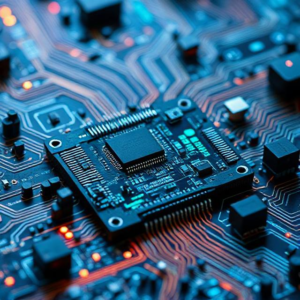Embedded systems are a critical part of modern technology, found in everything from household appliances to medical devices to automobiles. These systems are designed to perform specific tasks efficiently, reliably, and with minimal power consumption. While their design can be complex, embedded systems enable many of the everyday technologies we depend on to work seamlessly.
An embedded system is a combination of hardware and software that is designed to perform a dedicated task within a larger device. It’s like a mini-computer that is built to do a specific job and cannot be used for general-purpose computing.

An embedded system is a computer designed to perform a specific task or function within a larger system. Unlike general-purpose computers, which can run a wide range of applications (like your laptop or smartphone), embedded systems are designed to do one or a few specific jobs very efficiently. They are often “hidden” inside devices and are a critical part of modern life.
In simple terms, an embedded system is like a specialized “mini-computer” that helps devices do what they are designed to do—whether it’s controlling a microwave, managing a car’s engine, or operating a smartphone.
For example:
- A microwave oven uses an embedded system to control the heating process.
- A smart thermostat uses an embedded system to regulate temperature.
- A digital camera uses an embedded system to process and store images.
In these devices, the embedded system’s role is to perform specific functions (like cooking, temperature regulation, or taking pictures) without requiring the flexibility of a general-purpose computer.
Characteristics of Embedded Systems :
Here are some key characteristics of embedded systems:
Dedicated Functionality: An embedded system is designed to do one job very well. For example, a car’s airbag system only needs to detect collisions and deploy the airbags.
Real-time Operation: Many embedded systems must work in real-time, meaning they need to respond to inputs immediately or within a certain time frame. For example, a robotic arm must react to movements or signals in real-time to pick and place objects.
Low Power Consumption: Embedded systems are often powered by batteries or low-power sources, so they are designed to use as little power as possible. For example, a smartwatch runs on a battery that lasts for days.
Size and Cost: Embedded systems are usually small in size and inexpensive, making them ideal for integration into devices like televisions, watches, or appliances.
Reliability and Stability: Since embedded systems often control important functions (like brakes in a car or medical devices), they must be highly reliable and stable.
Components of an Embedded System :
An embedded system consists of two main components:
Hardware:
Microcontroller/Processor: This is the “brain” of the embedded system, like a mini-computer. It processes the information and executes instructions.
Memory: Embedded systems have memory to store data and instructions. There are two types: RAM(for temporary data) and ROM (for storing the software or firmware).
Input/Output Devices: These are used to interact with the environment. For example, buttons, sensors, or a touchscreen for input, and lights or displays for output.
Peripherals: These can include sensors, motors, cameras, and other devices that the embedded system controls.
Software:
Embedded Software: This is the software that runs on the microcontroller and controls the system’s functionality. It’s typically firmwarethat is hard-coded into the system.
Real-time Operating System (RTOS): Some embedded systems use an RTOS to manage tasks in real-time, ensuring that the system responds quickly and predictably to inputs or events.
Tags: automobiles, buttons, cameras, control, cooking, cost, dedicated functionality, dedicated task, digital camera, displays, Efficiency, embedded software, Embedded Systems, firmware, General-Purpose Computing, Hardware, hidden devices, household appliances, image processing, input/output devices, lights, low power consumption, medical devices, Memory, Microcontroller, microwave oven, mini computer, minimal power consumption, modern technology, motors, Peripherals, predictable response., processor, RAM, real-time operating system, real-time operation, reliability, ROM, RTOS, Sensors, size, smart thermostat, Software, specialized, specific tasks, Stability, task management, temperature regulation, Touchscreen


